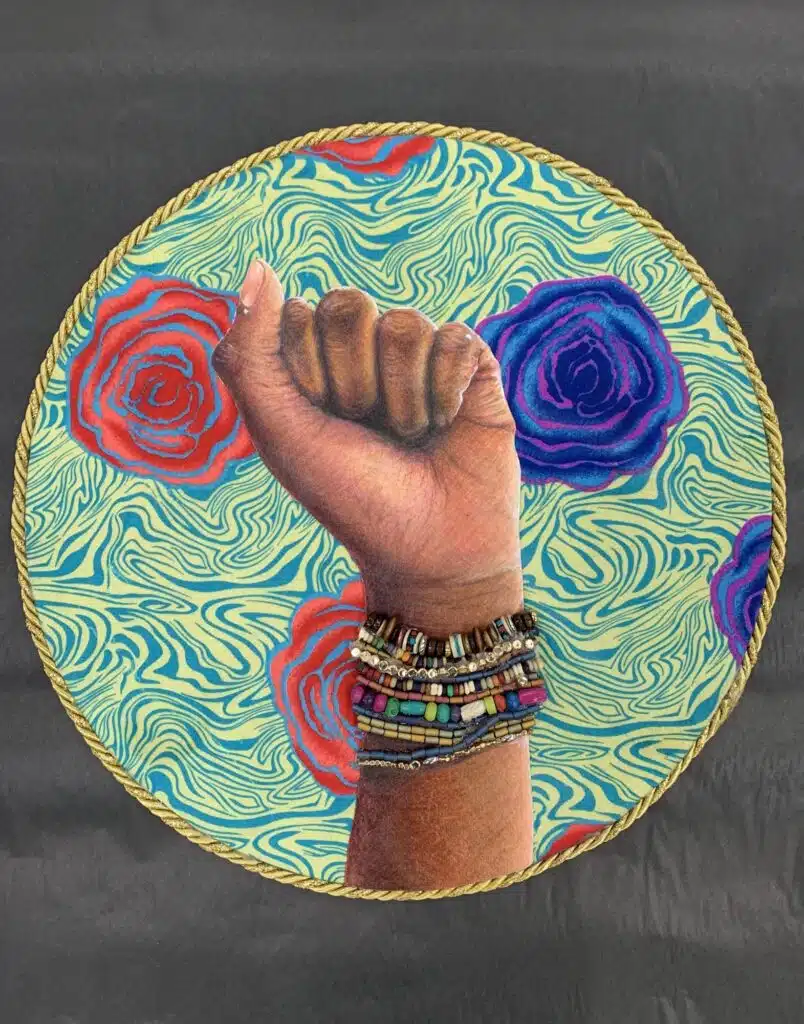
Aka anyi
Richmond, TX
2023, Senior, Art (2014 – 2023)
Climate Hero: Hilda Flavia Nakabuye, Climate Striker Diaries

Reflection
Reflection
In mainstream climate activism, we often see a focus on individuals from Western countries, while regions such as Asia, South America, and Africa are unfairly depicted as contributors to pollution. Growing up in Nigeria, I witnessed a different reality. The trash from the Western hemisphere, including used garments from the UK, Europe, North America, and Australia, floods our cities, perpetuated by big fashion companies exploiting cheap labor in gruesome factories. The African government, driven by taxation and bribery, turns a blind eye to these human rights violations. With this context in mind, my aim in creating this piece was to showcase the conservation and preservation efforts of indigenous people across the world, who have been caring for the environment long before the 20th century. I utilized wooden beads from my maiden accessories and incorporated the iconic African fabric known as Ankara. Ankara originated during British colonial times when they discarded materials that African communities repurposed to create intricate designs symbolizing tribes. It continues to be a common garment in Nigeria. Notably, Ankara fabric not only conserves electricity and reduces greenhouse gas emissions due to its handcrafted production process but also outlasts average cotton-made clothes. During my research, I delved into the deceptive practices of companies claiming to be vegan and environmentally conscious, only to discover that many are subsidiaries of larger family-owned organizations, like BlackRock, that wreak havoc on the planet. To address the problem at its root, we must boycott and avoid such entities. I admire the efforts of Hilda Flavia Nakabuye, an influential climate activist who organizes Uganda's Fridays for Future movement. Nakabuye and her fellow activists have successfully mobilized a strong youth movement demanding urgent action to combat the climate crisis. The movement has gained significant traction across East Africa, with over 50,000 young people involved. Nakabuye highlights the lack of diversity in the climate change movement, emphasizing that the debate should not be exclusive to any particular racial group. She speaks out against environmental racism and discrimination, exemplified by the cropping out of Ugandan climate activist Vanessa Nakate from a photo at the World Economic Forum. Nakabuye's use of communal activism, rather than individual action, resonates deeply with me. Overall, my work is driven by a desire to challenge misconceptions about indigenous people's role in environmental conservation, showcase the power of art as a storytelling medium, highlight the detrimental impact of multinational companies on the environment, advocate for collective actions to combat climate change, and evoke hope for a better future through unity and activism.

